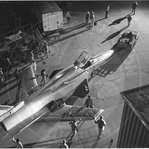An experimental aircraft that tested a forward-swept wing among other new technologies, the Grumman X-29 was designed and tested in the early 1980s. Only two aircraft were built and flown by NASA and the U.S. Air Force. The program was retired in the early 1990s.
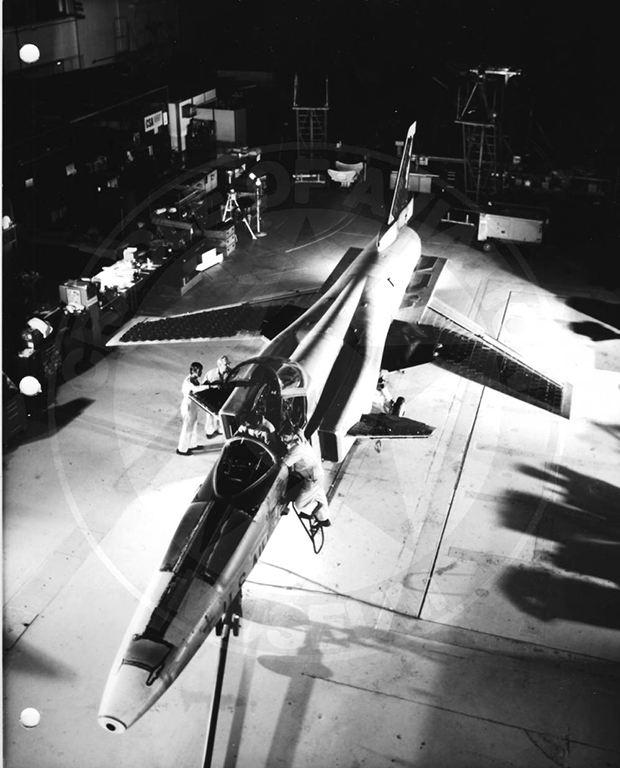
X-29 being readied for structural fatigue & load testing. Photo: Cradle of Aviation Museum, Garden City, NY.
A NASA fact sheet describes the X-29 as “featuring one of the more unusual designs in aviation history.”
The two planes were flown by NASA test pilots.
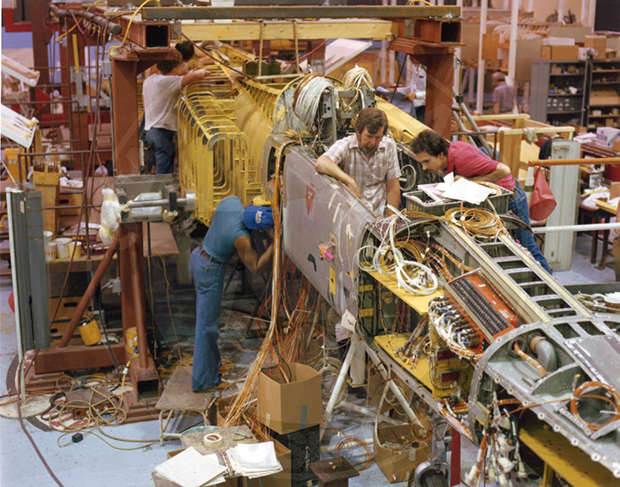
Grumman X-29 assembling the aircraft in Bethpage. Photo: Cradle of Aviation Museum, Garden City, NY.
“The demonstrators investigated advanced concepts and technologies during a multi-phased program conducted from 1984 to 1992. The program provided an engineering database that is available for the design and development of future aircraft.”
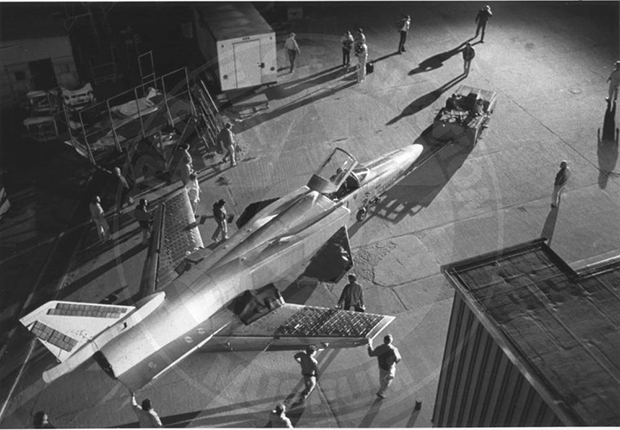
Grumman X-29 being towed at night at Bethpage. Photo: Cradle of Aviation Museum, Garden City, NY.
NASA goes on to say that the “research results showed that the configuration of forward-swept wings, coupled with movable canards, gave pilots excellent control response at up to 45 degrees angle of attack, higher than comparable fighter aircraft. During its flight history, X-29s were flown on 422 research missions. Aircraft No. 1 flew 242 in the Phase 1 portion of the program; 120 flights were flown by aircraft No. 2 in Phase 2; and 60 flights were completed in a follow-on ‘vortex control’ phase.”
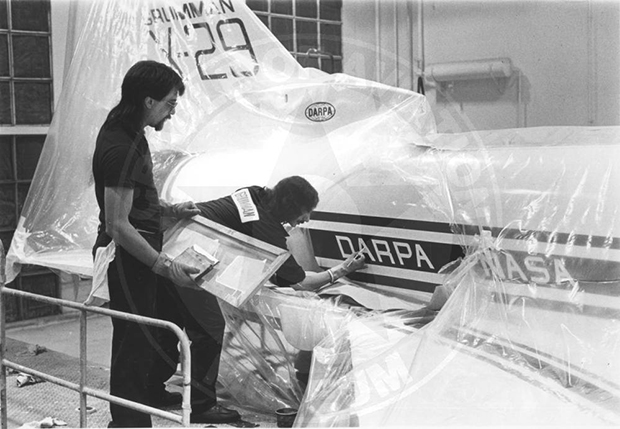
These photos from the Cradle of Aviation Museum archives show the X-29 at Grumman facilities on Long island being built, tested, and shown off to then Vice President, George H. Bush.
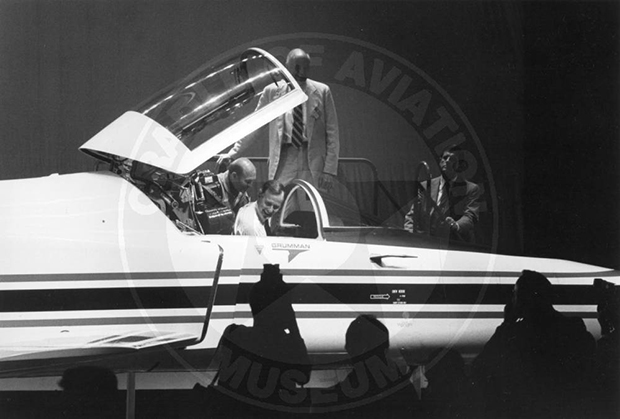
Grumman X-29 , public unveiling with Vice President, George H. Bush in cockpit, Chuck Sewell next to him, Calverton. Photo: Cradle of Aviation Museum, Garden City, NY.













